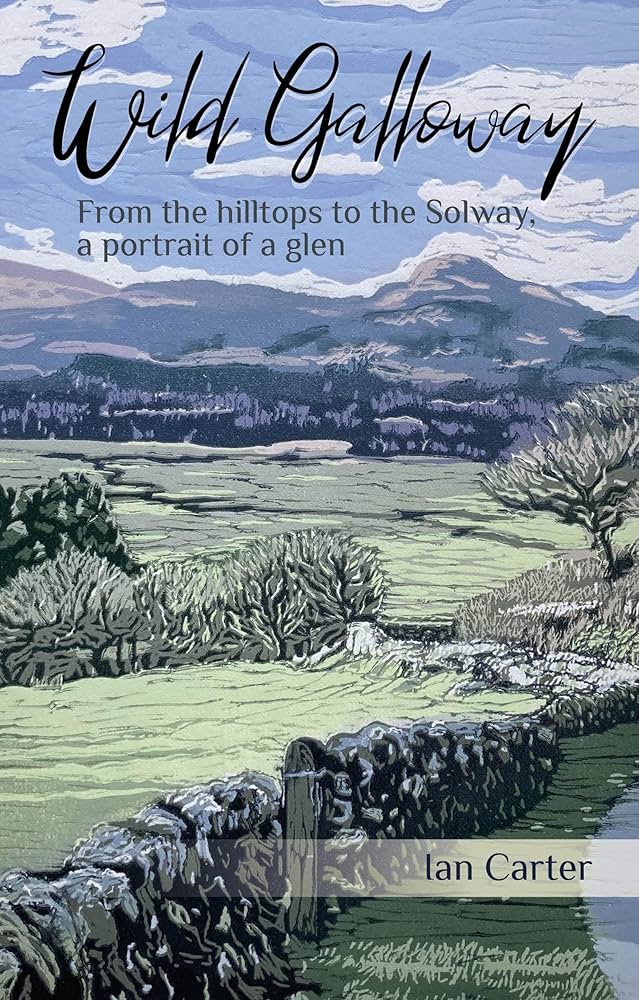Galloway is a relatively wild, somewhat forgotten corner of Scotland, which is part of the reason why Ian Carter chose to live there. After two years or so he has written up his findings, freshly-minted short sketches of the places he has visited, mainly on foot, from his house in a small glen. It is a pleasure to be in Carter’s observant company as he explores the foreshore, camps on an island, clambers through ancient woodland beside a burn or ascends through tussock and bog to the high tops of Bengairn. His patch becomes a proxy for the whole of ‘Wild Galloway’ as you join him on his expeditions. His main focus is the bird life around him, for he is, first and foremost, an ornithologist.
As he investigates his new surroundings, Carter takes the opportunity to examine ideas and issues. He watches forestry operations, comments on wind turbines and our insatiable demand for power, and dissects the role of sandhoppers in shredding plastic bags into millions of tiny pieces, ready to enter the food chain. He considers his ‘allegiance to wildness’ and the deep connections which come from spending time in nature.
Books are referenced at the bottom of the page on which they are mentioned, but there is no reading list. A lengthy section at the end, headed ‘the wildlife’, is mainly a rather unenlightening list of birds, although it includes a few mammals encountered and other vertebrates. With its page references, this has to serve as an index. I enjoyed his occasional description of dragonflies and wanted much more about invertebrates and the green life that sustains all wildlife, ourselves included.
I had the uncomfortable feeling that the author was a kind of nature tourist, albeit an authentic, serious one. Driven by a passion for birdlife, Carter has moved from Norfolk to Devon, and now to Galloway: drawn to a wilder place, with new material to write about. It is not surprising that there is relatively little about the people in the landscape, past and present, and how this has influenced the landscape he describes; it is the absence of people in the landscape, the opportunity to be on his own as he explores his new surroundings, that has brought him here. The human context is available elsewhere: you can read about farming in Galloway (and its curlews) in Patrick Laurie’s poetic book, Native.
In his article in British Wildlife (BW 36: 313–318), Carter considered the case for the proposed Galloway National Park. He noted the fears of landowners that, given National Park status, it might become more difficult to intensify land management in areas currently of high value for wildlife. It seems that landowners have mounted a successful campaign, and designation is now off the table. Will nature be forced to the margins, to be smothered by trees or nibbled to death by sheep? It would be nice to think that, in introducing new readers to this special region of Scotland, Wild Galloway, with its strong conservation message, will play its part in stopping this from happening.

